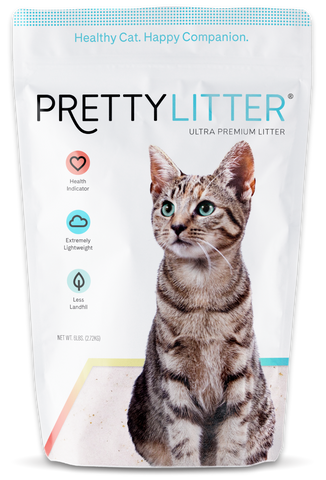December 12, 2018 |7 min read |Veterinarian Reviewed
Cat Parenting 101: Special Considerations for Your Female Cat

Written by

Cat Litter That Prioritizes Their
Health & Your Happiness.
to get your first bag for only $14.99
A Female Cat in Heat

First things first: yes, if your female cat isn't spayed, she will have a fertility cycle. In feline terms, this is called "heat" and a female cat in heat is referred to as a "queen."
It’s important to consider the population control benefits of spaying a female cat to help prevent shelter based euthanasias and out of control outdoor cat colonies. Spaying saves lives. There is an overpopulation of domestic animals in shelters, which leads to the euthanization of nearly 1.5 million shelter animals annually, 860,000 of them being cats according to the ASPCA.
-
Extremely vocal
-
Obsessed with rubbing against things in order to get her scent on as many surfaces as possible
-
Far more likely to attempt an escape, especially if she senses a male cat is outside
-
More likely to lick her genital area frequently, which may increase the risk of infection

A female cat can go into heat as early as four months of age and it signals that she's ready and able to have kittens. However, a cat who gets pregnant before she's at least 10 months old is far more likely to have health problems as her body is still developing.
False Pregnancy
-
To feel gently on your cat's belly
-
Visiting the vet for an ultrasound after day 16 of her possible pregnancy
-
Getting an x-ray of your cat's tummy
Birthing Issues

Being in charge of giving life to new beings is a doozy of a responsibility (am I right, ladies?). Understandably, then, female cats who have not been spayed often deal with problems during the birthing process.
-
Fetal Reabsorption – If a fetus is not viable, the mother cat's body will reabsorb the fetal tissue into her body. It is common for pieces to be found in the afterbirth when this happens. This is far more common if the mother cat has the FeLV virus.
-
Uterine Cysts – Cysts that are attached to the ovaries or uterus can cause hormonal imbalances and disrupt the development of healthy kittens.
-
Endometritis – A female cat with endometritis will develop a bacterial infection in her uterus that can kill any unborn kittens growing in her womb. In many cases, cats with endometritis are unable to breed again in the future; though in mild cases of infection, breeding may be possible with treatment.
Do you have a beautiful cat? Let us know in the comments!
----
Don't forget to follow us on Instagram: @prettylittercats
Delivered straight to your front door, every month. We’ll even pay your shipping.
Sources:
1. https://www.prettylitter.com/blog/cat-parenting-101-special-considerations-for-your-female-cat









